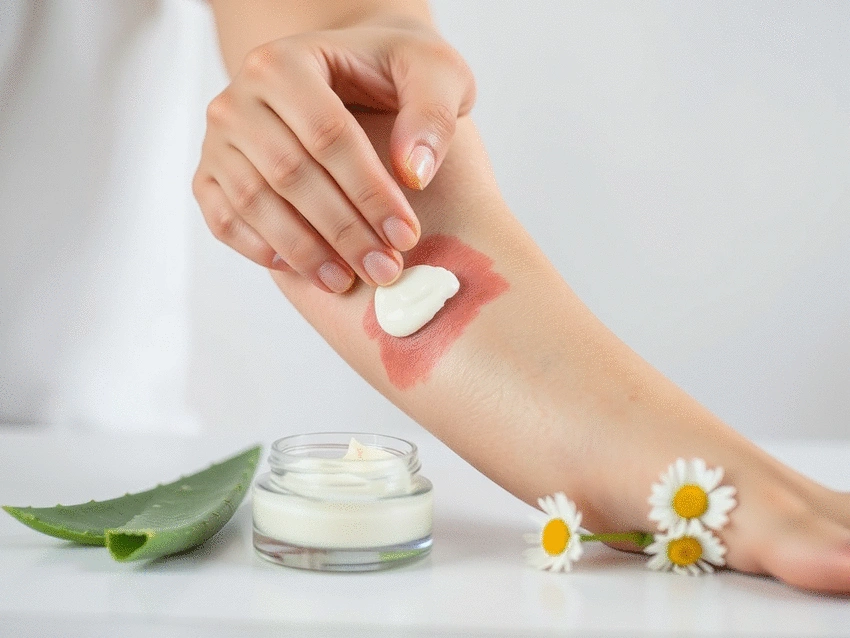Overview:
Steroid Creams Potency Levels
Steroid creams are classified by their strength, which determines where and how they should be used.
Did you know that understanding the correct use of steroid creams can drastically improve your skin health? These treatments are not just for severe rashes; they can provide comfort and relief for a variety of skin conditions. Let's dive into the essential insights you can gain from exploring their role in rash treatment.
Steroid creams come in various strengths, each suited for different skin conditions and body areas. Selecting the correct potency is crucial for effective treatment while minimizing side effects.
Steroid creams are classified by their strength, which determines where and how they should be used.
Example: Hydrocortisone
Examples: Betamethasone, Triamcinolone
Example: Clobetasol Propionate
Always consult a healthcare provider to determine the appropriate steroid cream for your specific condition. Misuse can lead to side effects.
Steroid creams, often referred to as topical corticosteroids, play a significant role in managing various skin rashes. These medications work by reducing inflammation and suppressing the immune response, making them effective in treating conditions like eczema, psoriasis, and dermatitis. Have you ever experienced an itchy rash that just wouldn’t go away? In such cases, steroid creams can be a helpful ally in regaining your skin's comfort.
When applied to the affected area, steroid creams penetrate the skin and target the underlying inflammation. This action can significantly decrease redness, swelling, and itching. However, it's essential to use these creams correctly to maximize their benefits while minimizing potential side effects. For example, the National Eczema Association provides detailed guidelines on the proper application and usage of topical steroids to ensure both efficacy and safety.
Steroid creams function primarily by inhibiting the release of inflammatory substances in the skin. This helps reduce symptoms like itching and swelling. They come in various strengths, allowing healthcare providers to tailor treatment according to the severity of the rash. It's like having a toolkit where each tool has a specific job to do!
Understanding the potency of these creams is crucial for effective treatment. For instance, a low-potency cream may be best for a child’s eczema, while a higher potency might be necessary for managing adult psoriasis. Always consult with your healthcare provider to ensure you are using the right strength!
One of the most significant advantages of using steroid creams is their ability to alleviate the discomfort associated with skin inflammation. For conditions like eczema, which causes dry, itchy patches on the skin, these creams can provide rapid relief. Many of my readers at What Are Rashes have shared how their quality of life improved with the right steroid treatment!
In addition to providing immediate relief, steroid creams can help prevent flare-ups when used as part of a comprehensive skin care routine. By working alongside moisturizers, these creams can help maintain the skin barrier, making it less susceptible to irritants.
There are several types of steroid creams available, each with varying potencies and specific uses. Understanding these options can help you make informed decisions about your treatment. Here are three commonly prescribed steroid creams:
Each of these creams has its specific applications and limitations, so it's vital to discuss your options with a dermatologist. They can guide you on which cream is most appropriate for your skin condition, ensuring you receive the best care possible.
While steroid creams can provide significant relief, it’s important to recognize that they are not without risks. Understanding these potential side effects can empower you to use them safely and effectively. For instance, a study published in PMC NCBI highlights the importance of careful usage to avoid adverse effects, emphasizing that long-term continuous use can lead to skin thinning, stretch marks, and changes in skin pigmentation.
Have you ever used steroid creams for your skin condition? We’d love to know about your experience! What has worked for you, and what challenges have you faced? Share your thoughts below:
When it comes to managing rashes, steroid creams can offer significant relief, but it's equally important to understand the potential risks involved. These creams work wonders by reducing inflammation and itching, making them a popular choice for treating various skin conditions like eczema and psoriasis. However, recognizing both the benefits and the possible side effects is crucial for effective rash management.
Some of the primary benefits of steroid creams include:
On the flip side, the potential risks shouldn't be overlooked. Common local side effects can include skin thinning and stretch marks, which are important to monitor. Understanding these aspects allows individuals to make informed decisions about their treatment paths. It's also worth noting that some common misconceptions exist regarding these treatments, and it's essential to address them with factual information, as discussed in an article about topical steroid bias.
It’s natural to have questions regarding the use of steroid creams. Here are some frequently asked questions that I often encounter:
By addressing these concerns, I hope to provide clarity and empower you to make knowledgeable choices about your skin treatment! Remember, understanding your options is the first step toward achieving healthier, more comfortable skin.
Making informed decisions about using steroid creams is essential for successful rash management. I always emphasize the value of consulting with healthcare professionals—whether you're dealing with a straightforward rash or a more complex skin condition. Your dermatologist can help tailor a treatment strategy that suits your specific needs and skin type.
Additionally, regular monitoring of the skin's response to treatment is vital. Here are some aspects to discuss with your healthcare provider:
By working closely with professionals, you can navigate the complexities of rash treatment and enhance your skin health effectively!
Here is a quick recap of the important points discussed in the article:
